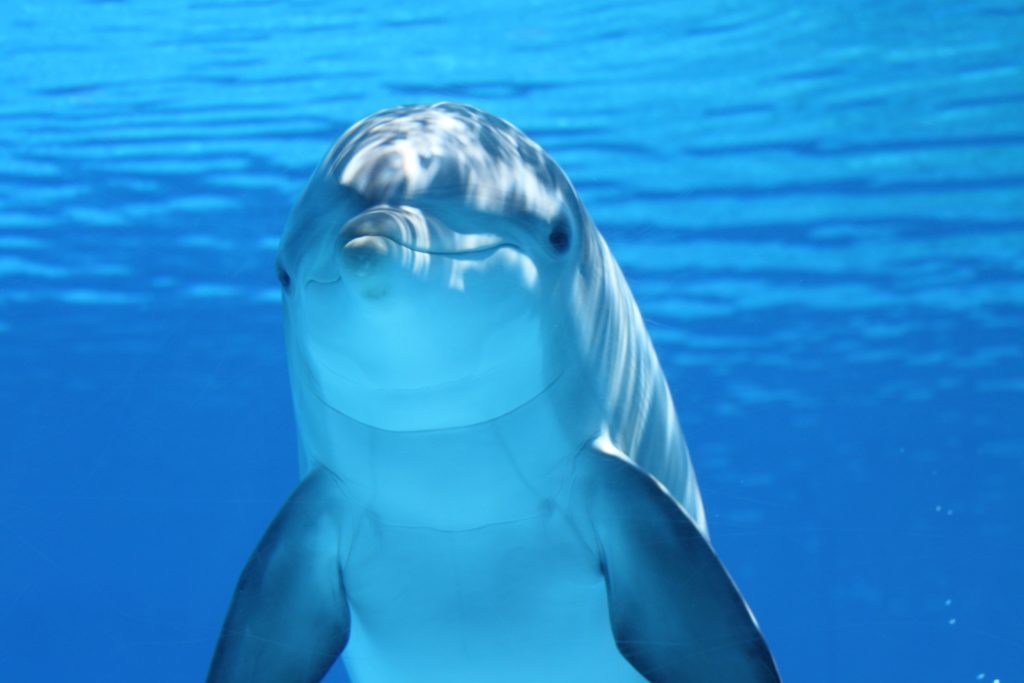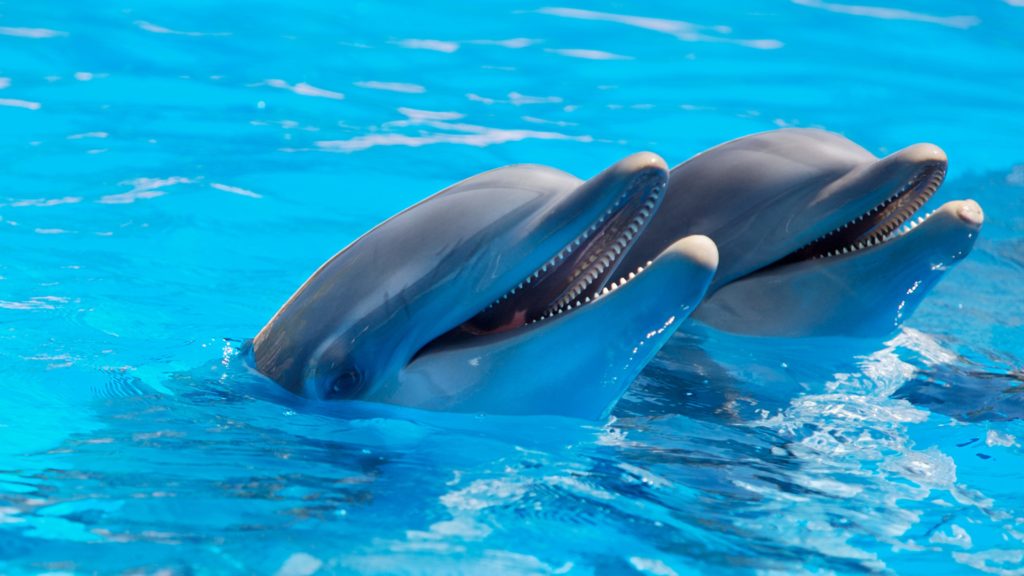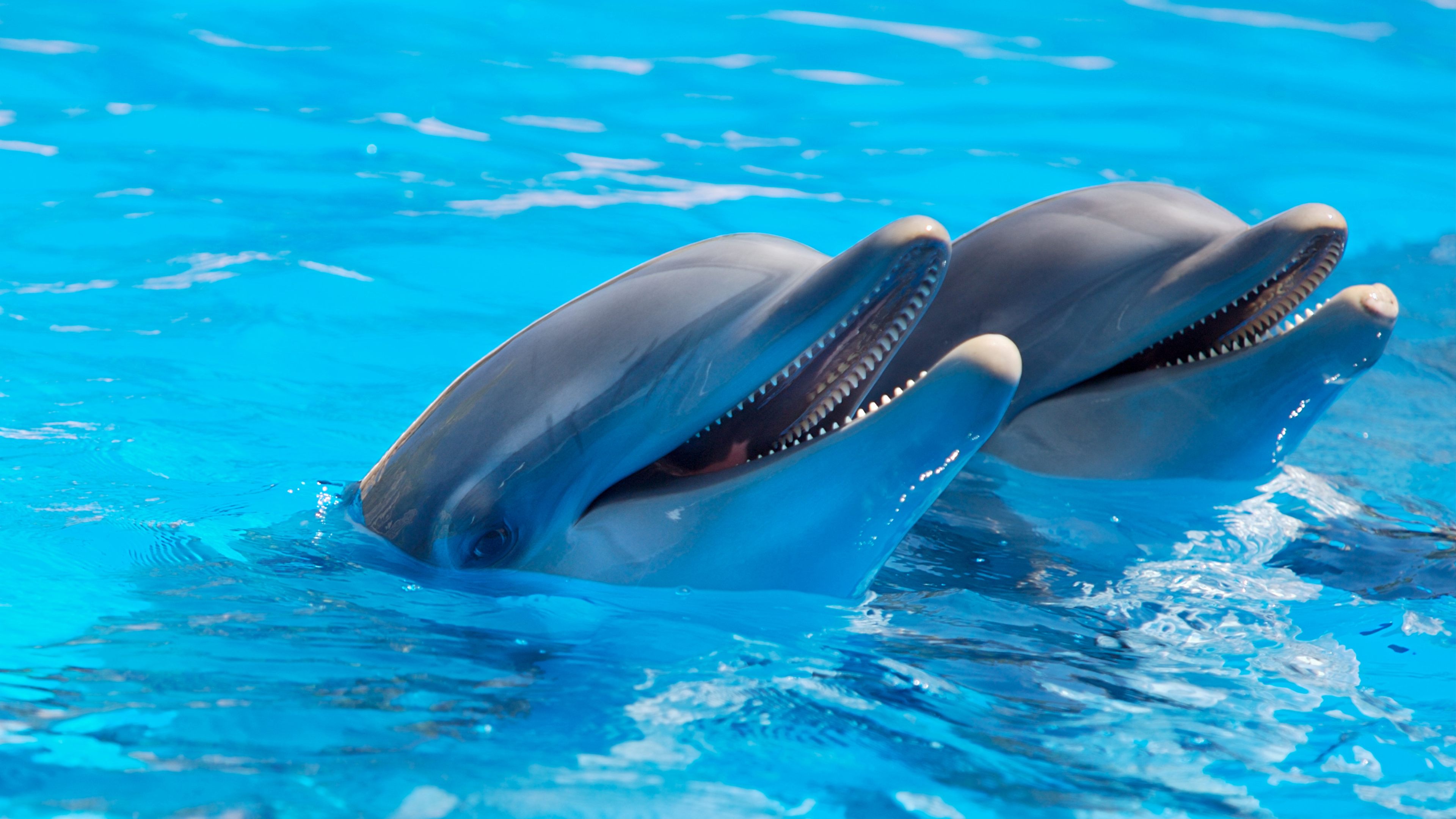Dolphins are sometimes called “re-entrants,” because they once lived on land and looked and behaved a lot like wolves, but with small hoof like toes on each foot instead of claws. They also have remnants of finger bones in their flippers, and a forearm, wrists, and few remnants of leg bones deep inside their bodies. Take a look below for 27 more interesting and weird facts about dolphins.
1. Dolphins replace 90% of the air in their lungs with fresh air every single time they breathe in. On the other hand, humans only replace 15% of the air in their lungs with fresh air when they take a breath.
2. Dusky and spinner dolphins can leap 20 feet, or about 6.1 meters, in the air. Spinner dolphins even got their name from spinning above waves.
3. Researchers believe that dolphins don’t dream because they never really fall into a deep sleep.
4. Dolphins can recognize themselves in the mirror.
5. In Ancient Greece, killing a dolphin was considered sacrilegious and was punishable by death. This was because the Greeks believed them to be sacred fish.
6. In Ancient Rome, dolphins were thought to carry souls to the Islands of the Blest.
7. There are 40 different species of dolphins. Most of the species live in shallow tropical waters. 5 species live in rivers.

8. There was a two-headed dolphin that was found in Turkey in 2014. It’s thought that the dolphin was a genetic mutation and not a normal occurrence.
9. Narwhal dolphins have a large ivory tusk, which is often poached. They mainly reside in the Greenland Sea and Baffin Bay.
10. Dolphins have the longest memory in the animal kingdom.
11. They’re able to talk and understand each other over the phone.
12. When dolphins sleep, only one half of their brain rests.
13. A tablespoon of water in a dolphin’s lungs can drown it. On the other hand, it takes two tablespoons of water to be inhaled in the lungs for a human to drown.
14. Some dolphins are able to understand up to 60 words, which can make up to 2,000 sentences.
15. A dolphin’s brain is more folded than a human’s, and it was this way for millions of years. What’s interesting is that researchers often measure the level of intelligence an animal has by the number of brain folds it has.
16. A female dolphin will assist in the birthing process of another female’s offspring. If its a difficult birth, the other female dolphin will help pull the baby out. Other dolphins, including bulls, will swim around the mother and the helper during birth for protection.
17. A baby dolphin is born tail first to prevent drowning. The female dolphin will break the umbilical cord by swimming away, then she will return to the offspring so she can take it to the surface to breathe.

18. Dolphin’s exhale from their blowholes at speeds of 100 miles per hour.
19. A dolphin’s echolocation skill is better than a bat’s sonar and the human’s sonar tools.
20. Using echolocation, dolphins can tell between a steel ball that’s 2 and a half inches in diameter and one that is 2 and a quarter inches in diameter.
21. Blocking off a dolphin’s ears will hardly have any effect on its hearing, however, if you cover its lower jaw with a rubber jacket, it will have a lot of trouble hearing. This means that the sound is carried from the water to its inner ear through the lower jaw bone.
22. A dolphin produces whistles for communication and clicks for sonar at the same time. This is like a human speaking in two voices, with two different pitches and while holding two different conversations.
23. Dolphin’s can make about 700 clicks per second.
24. They don’t drink water as they get it all from the food they eat.

25. The life expectancy for dolphins varies widely from specie to specie, but it spans between 12 to 80 years. Bottlenose dolphins live into their 50s, while orcas can live up to their 80s. The general rule is that the bigger the dolphin, the longer the lifespan.
26. A dolphin’s blowhole is an evolved nose that has moved upward to the top of their head.
27. Since dolphins are connected to their mothers by an umbilical cord inside the womb, they have belly buttons.




